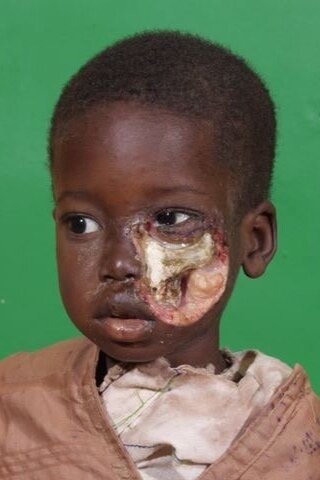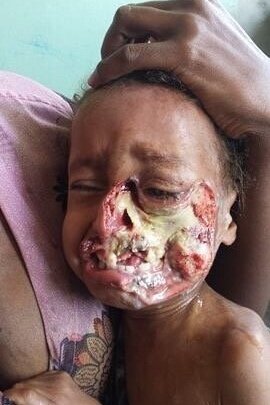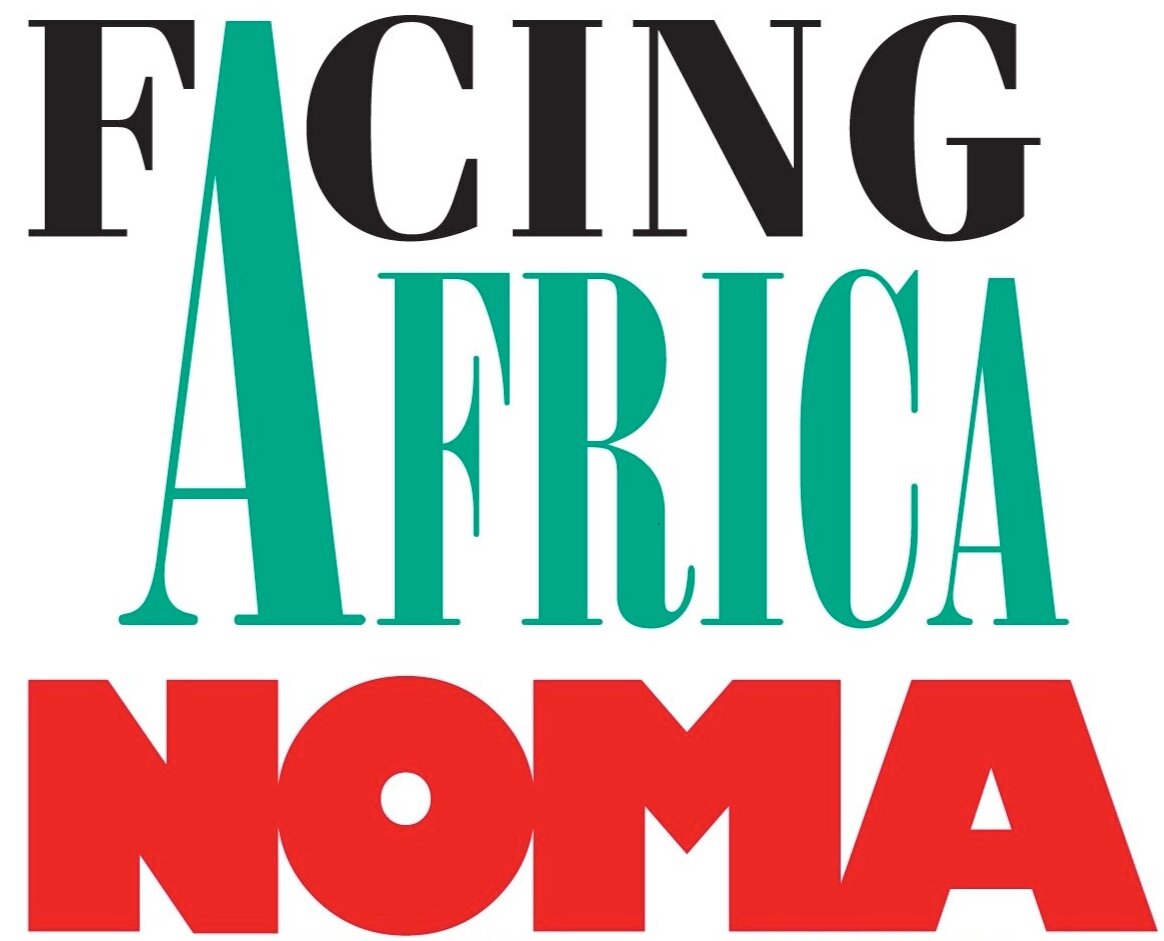





Noma (cancrum oris) is an acute and ravaging gangrenous infection affecting the face.
The victims of Noma are mainly children under the age of 6, caught in a vicious circle of extreme poverty and chronic malnutrition who suffer unimaginable pain, discomfort and social exclusion from their communities.
Noma is an opportunistic infection that begins with ulcers in the mouth that is promoted by extreme poverty. If the condition is detected in the early stage, progression can be prevented with the use of mild antibiotics and immediate nutritional rehabilitation. If left untreated, as happens in most cases, the ulcers progress to Noma at an alarming pace. The next stage is extremely painful when the cheeks or lips begin to swell and the victim’s general condition deteriorates. Within a few days, the swelling increases and a blackish furrow appears and the gangrenous process sets in. After the scab falls away, a gaping hole is left in the face. It is estimated that the mortality rate reaches up to an alarming 90% because most cases occur in a remote rural areas when there is little, if any medical facilities.
The World Health Organisation (WHO) estimates 140,000 new cases of noma every year, mostly in sub-Sahar Africa.
The history of Noma
The first description of Noma as a clinical entity originated from Carolus Battus, a surgeon in The Netherlands in 1595.
In 1828 A.L. Richter (a doctor in Berlin) clarified in his book that Noma had been widespread throughout Europe for many centuries and it was understood that malnutrition and measles could lead to Noma. By the end of the 19th Century, Noma had virtually disappeared from Western Europe as a result of improved nutrition and conditions of hygiene among the poor people. Noma cases were also found in Nazi concentration camps where victims died as a direct result of malnutrition during the industrial revolution.
As a paradox, the active treatment of Noma became possible only AFTER its disappearance from Europe with the discovery of penicillin and by the development of reconstructive surgery. In less developed countries, however, Noma remained what it was, the “true face of real poverty”.
